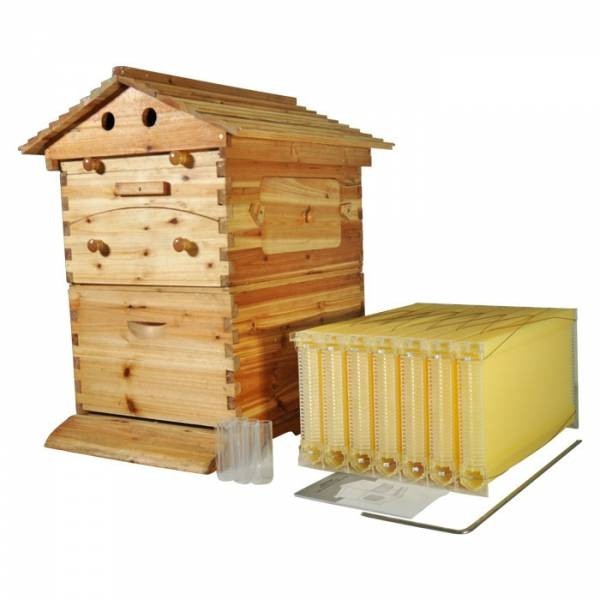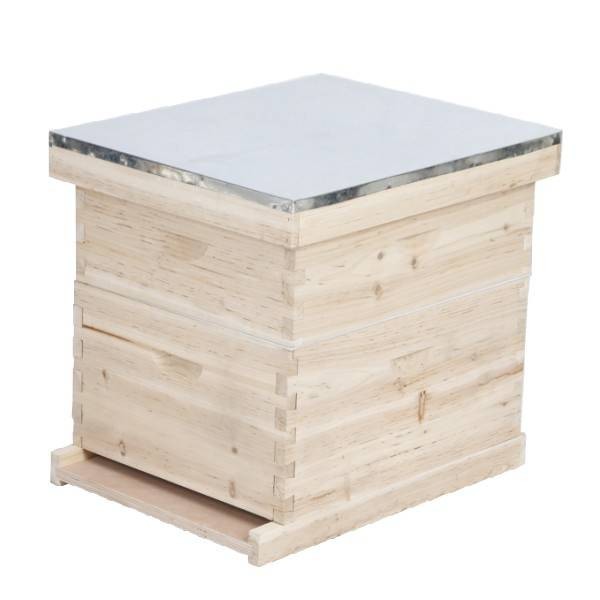They are often found in gardens, orchards and even on balconies.Bees are amazing creatures and their ability to live in a wide range of environments is just one of the many things that make them so special. Beehives can be located just about anywhere, from gardens and orchards to balconies. No matter where they are situated, bees will thrive and continue to play an important role in our ecology.
You can keep Beehives in the country or city, garden corner, by your backdoor, or even on your rooftop. They are easy to maintain and don’t require much space, making them a great option for those with limited yard space. Plus, you’ll get to enjoy fresh, locally-sourced honey!
Bees are able to adapt to most situations that they come across. This is due to their ability to communicate with one another. When one bee finds a good source of food, they will communicate this back to the rest of the hive. This allows the bees to quickly adapt to their surroundings and find the best sources of food.
If you want to keep bees, you need to check with your local rules and regulations first. There may be special requirements or permits that you need in order to keep bees in your area. Once you know what the requirements are, you can start looking for a beehive. There are a few things to keep in mind when you're choosing a beehive. You want to make sure that it's the right size for the amount of bees you have, and that it's in a good location. You also want to make sure that the hive is well-ventilated and has plenty of space for the bees to move around.
Bees need access to a food and water source in order to survive. A food source for bees can be anything from nectar and pollen to honey and propolis. A water source for bees is typically a nearby body of water, such as a lake, river, or stream.
and the number of hives a beekeeper can operate.The number of hives that a beekeeper can have is limited by the amount of available land and the number of hives that the beekeeper can operate. The size of the land will determine how many hives can be placed on it, while the number of hives a beekeeper can operate will depend on their experience and the amount of time they are willing to devote to their bees.
This is especially true if the suburb has been designed with bees in mind, for example by planting a variety of bee friendly plants. However, if the suburb has been designed without bees in mind, it can be quite difficult for them to find the resources they need to survive. This is why it's important to think about bees when planning your garden, and to include a variety of bee friendly plants.
If you don't provide your bees with a water source, they will die. A strong colony of bees can use over a litre of water to cool the hive on a hot day.
Safety & Neighbourly relations
Managing beehives in residential backyards can be done in a few ways to ensure bees don't become a nuisance to neighbours. One way is to make sure the hive is not too close to the property line. Another way is to keep the entrance to the hive facing away from neighbouring properties. Finally, regular maintenance of the hive will help to keep bees from becoming a nuisance.
Before getting bees it is advised to talk to your neighbours and let them know you intend to keep bees. That way, they can be aware in case they have any allergies, and also so they aren't surprised if they see bees around your property.
If you are near their hives, it is best to keep your distance Bees are important pollinators and their flight path can help you determine where they are going. By avoiding areas with high bee activity, you can help ensure the safety of these important insects.
Bees are attracted to light, so it's important to make sure that your hive entrance does not face any bright lights or house doorways. Use a screen to block the light from getting to the hive. This will help keep the bees inside the hive and prevent them from being drawn to any outside lights.
Beehive placement isn’t an exact science. However, there are some things you should take into consideration when choosing a spot for your beehive. First, consider the amount of sun the location gets. Bees need sunlight to stay warm and to help them dry out their wings after flying. Second, think about the proximity to flowers and other sources of pollen and nectar. The closer the hive is to these sources, the easier it will be for the bees to find food. Finally, take into account the wind direction. You don’t want to place the hive in a spot where it will be constantly bombarded by wind, as this can make it difficult for the bees to fly. As long as you take these factors into consideration, the bees will flourish in most situations.
Auto Flow Beehive Wholesale
The Auto Flow Beehive is a revolutionary new beehive that allows honeybees to flow continuously, without the need for human intervention. This means that honey can be harvested on a regular basis without disturbing the bees, which is crucial for their health and wellbeing. The hive is also designed to be more user-friendly, with an easy-to-use interface that makes it perfect for beginner beekeepers.

Langstroth Hive Wholesale
The Langstroth hive is a type of beehive designed by American entomologist Lorenzo Langstroth in 1852. It consists of a series of vertical frames in a box, with each frame containing a honeycomb. The bees build their comb in the frames, and the honey is stored in the comb. The hive is named after Langstroth, who designed it.

